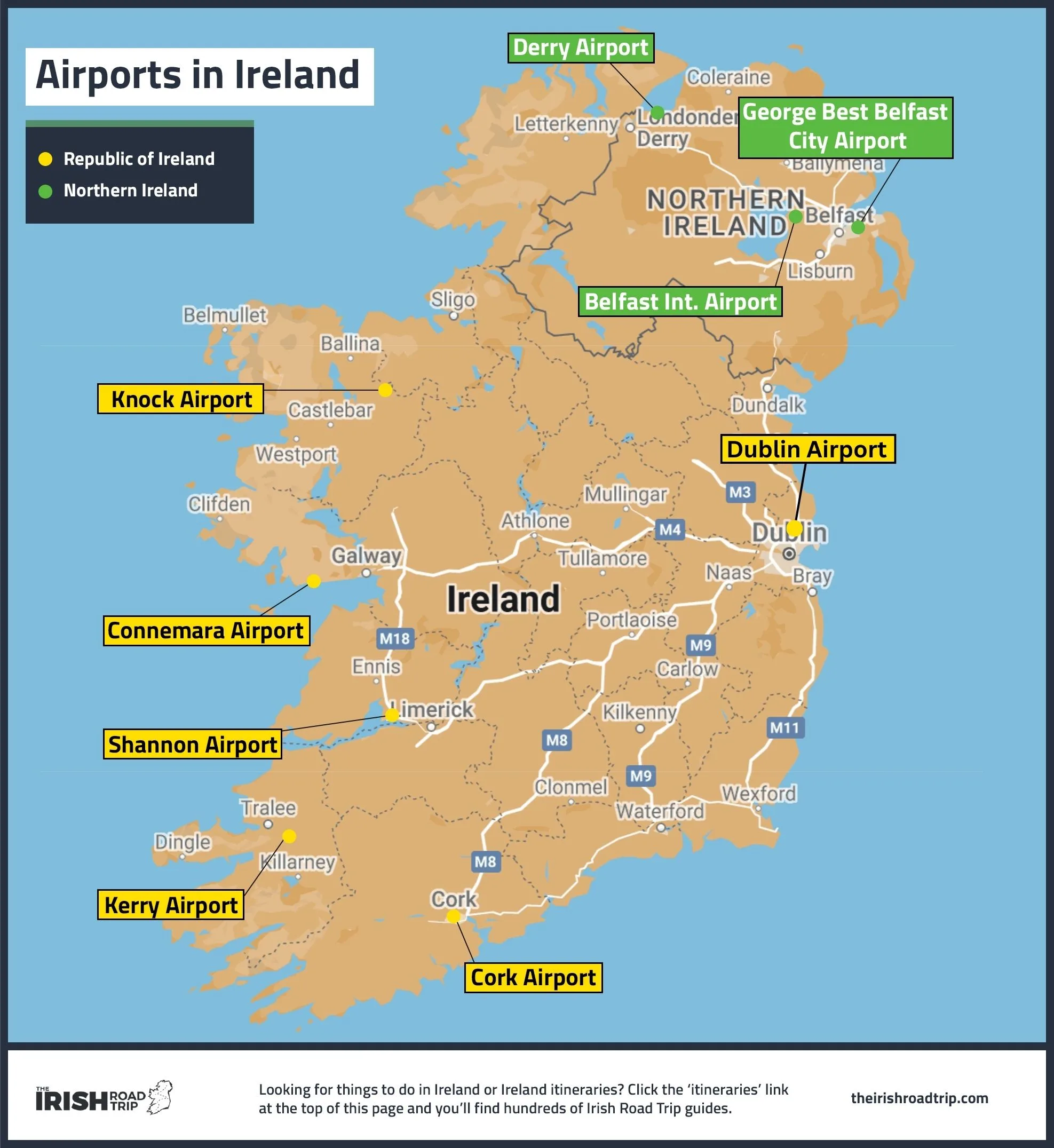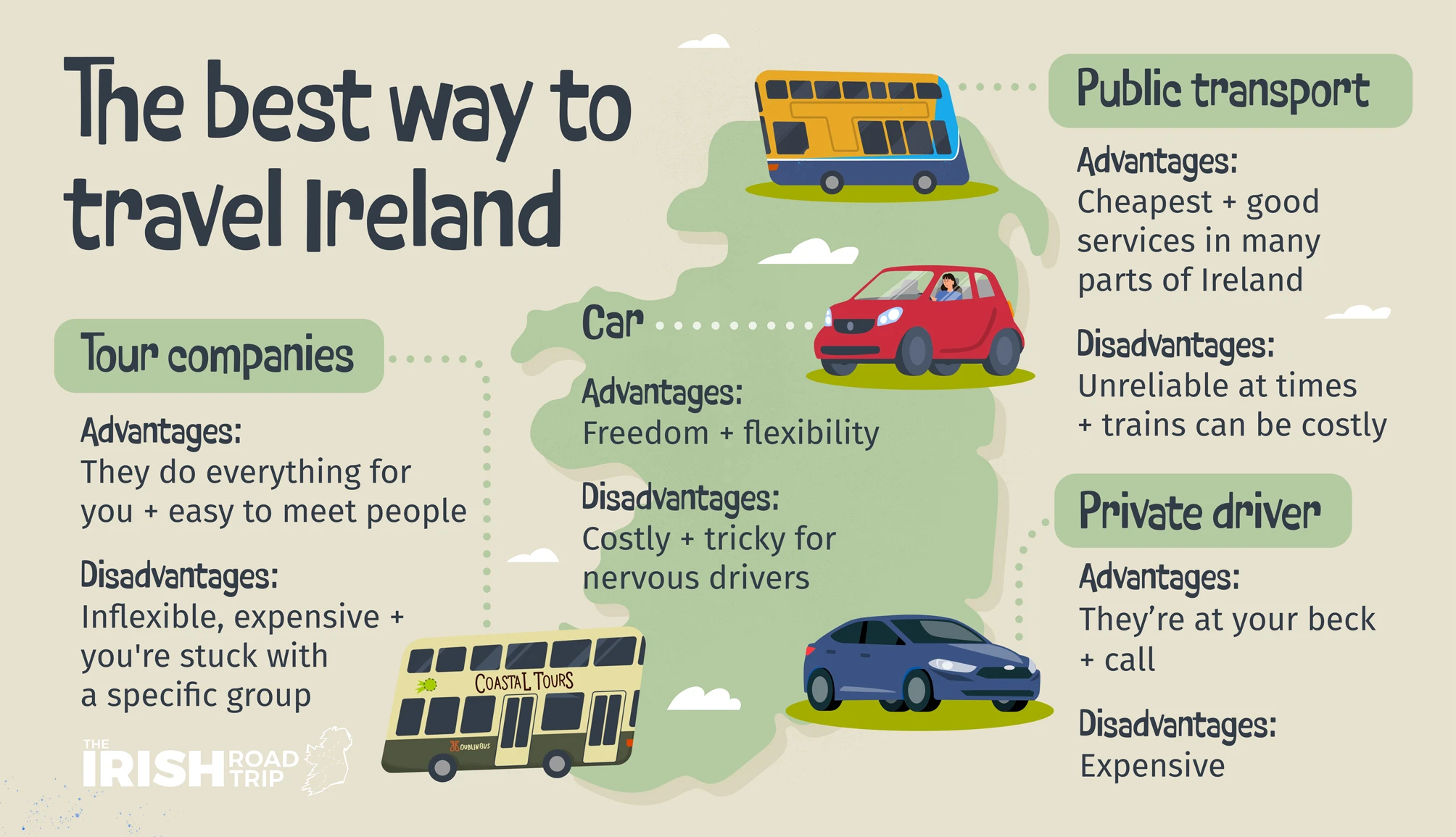As the years go by, it’s becoming increasingly difficult to travel Ireland on a budget.
In recent years, the cost of living in Ireland has skyrocketed, and this has affected tourists and locals alike.
For example, the cost of a 5-day budget trip starts at €1,261/$1,340 per person.
However, it’s not all doom-and-gloom – how much your Irish Road Trip costs can be directly within your control, once you consider the points in this guide.
The foundations of planning a trip to Ireland on a budget

If you only take one thing from this guide, let it be this section, as it’ll set you up for success if you’re looking to travel Ireland on a budget.
Your avoidable and unavoidable costs and how you work with them (not against them) is key:
1. You need to learn how to lower your unavoidable costs
You’ll have avoidable and unavoidable costs when travelling to Ireland.
It’s possible to dramatically reduce your unavoidable costs, like your flights, accommodation and how you get around, by planning ahead (info below).
2. And you need to be clear about your avoidable costs
The likes of souvenirs, pints, breakfast (it’ll be included in your accommodation if you plan properly!) and certain paid tours/attractions are all avoidable costs.
Being clear on what isn’t an absolutely necessity is key if you’re looking to travel to Ireland on a budget.
The cheapest way to travel to Ireland

Photos via Shutterstock
The cost of a trip to Ireland can turn eye-watering if you don’t dedicate time to planning your trip in advance.
If you’re looking for the cheapest way to travel Ireland, I have been giving the tips below to budget-conscious travellers for the last 6 years.
Visit during the cheapest time to travel to Ireland

Click to enlarge
Arguably the most important factor when looking to visit Ireland on a budget is to only visit when the price of flights and accommodation are at their lowest point.
If you read my guide to the best time to visit Ireland, you’ll see that some months (the peak season) are far more expensive than others.
The cheapest time of year to visit is during the shoulder season or during the off-season (outside of NYE and Christmas).
The one trade-off is the the weather in Ireland can be worse during these months.
Cost comparison: Return flights from the US in early March cost from €415/$440 vs €585/$621 in June – that’s a saving of €170/$172!
Set alerts for flight prices
OK, so you’ve decided that you’re visiting during the off-season. The next step in visiting Ireland on a budget is to set alerts for the flight prices.
Now, if you check them and see that they are within your budget, book them asap – there’s no need to wait.
However, if they’re outside of your budget, it’s always worth setting up a price alert with the likes of Skyscanner.
More often than not you’ll find they’ll go up and down.
WARNING: Plan your Ireland itinerary before you book flights. There are several airports in Ireland so it’s worth knowing which airport will make the most convenient start-point for your road trip!
Weigh up the different ways of getting around Ireland
The cheapest way of getting around Ireland on a budget is to use public transport.
Public transport in Ireland, while far from perfect, will save you cash when you compare it to the cost of renting a car in Ireland.
For example, if you were to rent a car for 5 days in June it’d cost from €403/$428 (not including insurance, fuel, etc.).
When you compare this to using buses (e.g. €21/$22.30 to go from Dublin to Galway) and trains (e.g. €21/$22.30 to go from Dublin to Cork), the saving is clear.
Our 2 cents: In my guide to Ireland without a car, you’ll find why combining public transport with organised day tours is a very handy way of getting around.
Find pocket-friendly places to stay away from the cities

Photos via Shearwater
Arguably one of the most important Ireland travel tips if you’re looking to travel Ireland on a budget revolves around finding pocket-friendly accommodation.
Hotels in Ireland, especially in cities and busy towns, can be incredibly expensive.
You’ll find, 9 times out of 10 that B&Bs and Airbnbs are cheaper.
You tend to get the best deals in towns and villages that lay a little off-the-beaten-path.
In the photo above, you’ll see Shearwater in West Cork – the best value place I’ve stayed in years!
Traveller beware: The problem that can arise when booking lodging off-the-beaten-path is that it’s sometimes impossible to reach by public transport.
Be prepared when it comes to food – eating out can skyrocket your budget
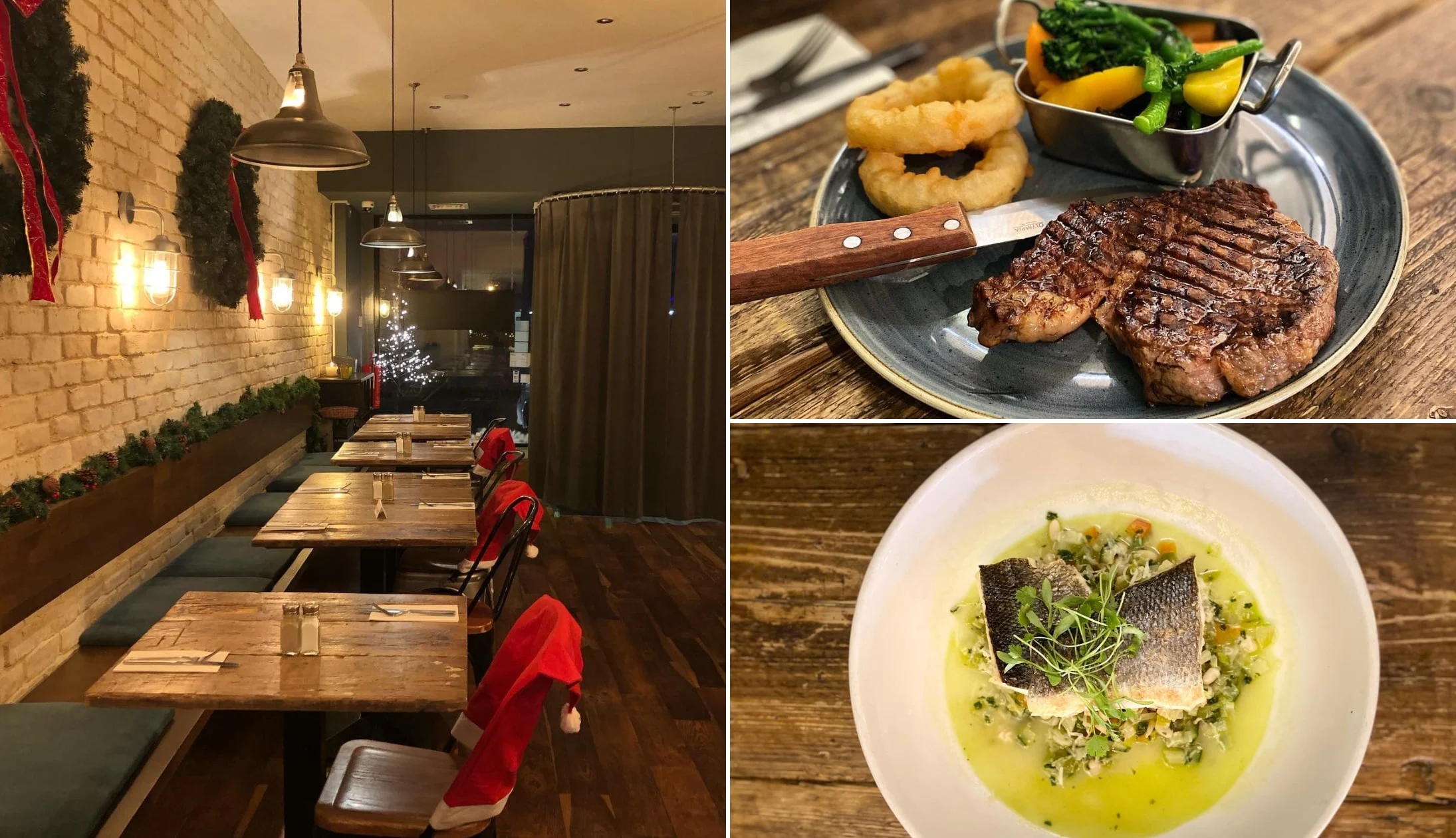
Photos via Great Jones on FB
If you’re planning a trip to Ireland on a budget, you need to be prepared when it comes to food. Eating out for breakfast, lunch and dinner will banjaxx (Irish slang for damage) your bank account, so you need to plan.
One of the easiest ways to save money on eating out is to stay in self-catering accommodation where you can cook your own meals.
However, that’s not always possible. A good approach is to try and book B&Bs where your breakfast will be included.
If that’s not possible, go to a store like Dunnes or Lidl and buy supplies to make breakfast and lunch (e.g. oatmeal pots, fruit and sandwich fillings).
For perspective: Breakfast in a cafe will cost from €10/$10.60 to €15/$15.92 while dinner will cost €15/$15.92 to €25/$26.53.
Setting an ‘entertainment budget’ is boring but crucial
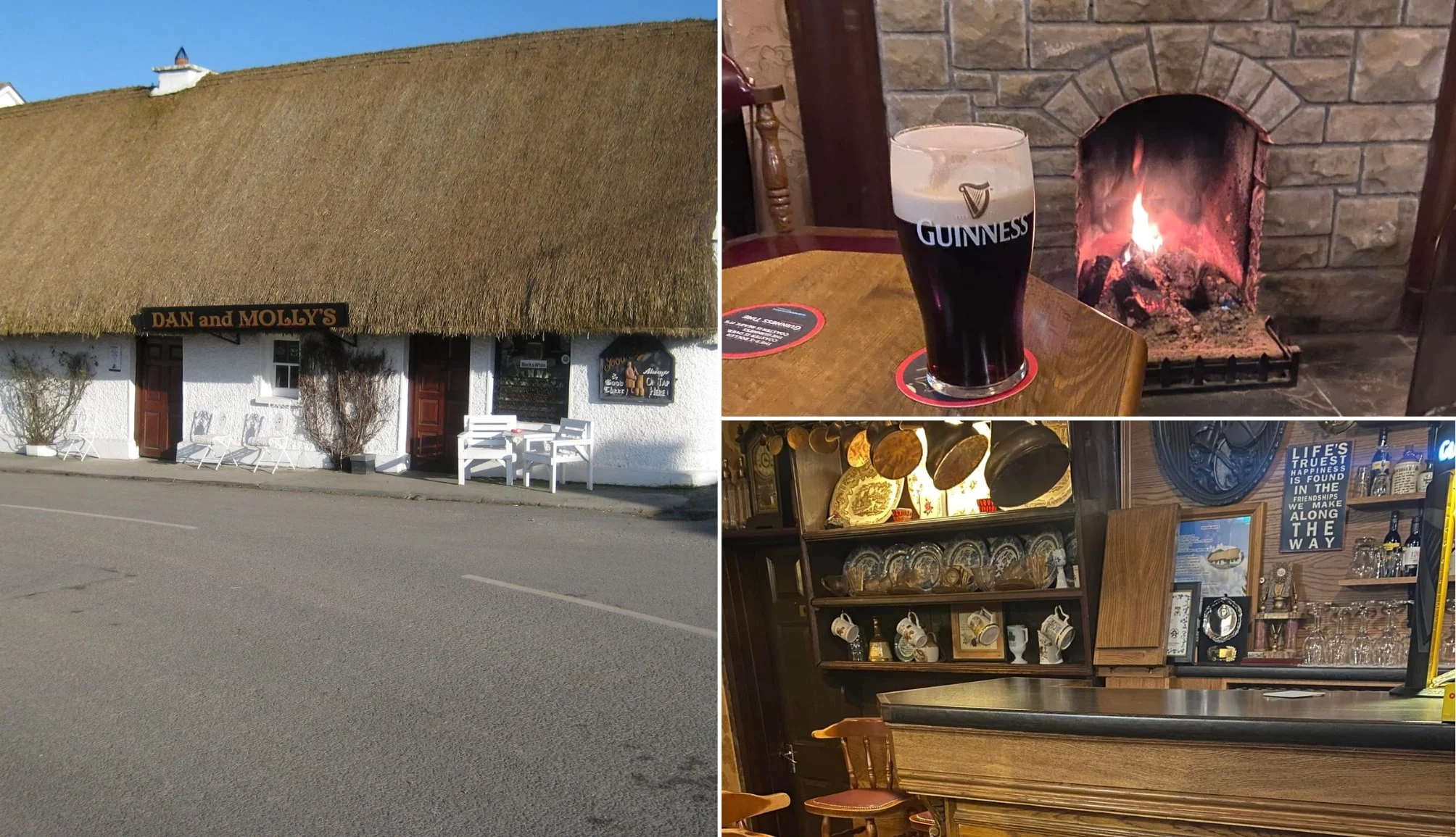
Photos via Dan and Molly’s on FB
Another way to visit Ireland on a budget is to limit the amount that you drink in pubs. If like me, you tend to have five or six pints on a night out, you’ll find that the €€€’s add up very quickly.
The price of a pint in Ireland can range from €5.50/$5.79 to €9/$9.48 (Temple Bar…) depending on where you are.
If you’re spending one week in Ireland and you drink 20 pints over the week at, say, €5/$5.27 a go, that’s €100/$105.36.
Now, it could be argued that you’re on holiday and that there’s nothing like rounding off a day of exploring with a post-adventure pint, but you need to be careful if you’re trying to keep your spending to a minimum.
Set an entertainment budget: And stick to it! If it’s €50/$52.68 for the week, so be it. It’ll make sticking to a budget much handier.
If you’re organised, you can get a VAT refund on some purchases

Bottom left: Massonstock. Top right: simarik. Left: Corelens (Canva)
If you’re travelling to Ireland from outside of the EU, you may be entitled to a VAT refund on some purchases.
Now, you might think that this isn’t worth doing, but the standard VAT rate is 23%… yes, 23%!
Just keep in mind that this doesn’t apply to everything you buy.
Visiting Dublin? Get a Leap Visitor Card and a Dublin Pass
Two of the handiest ways of doing Ireland on a budget if you plan on spending time in Dublin is to get a Leap Visitor Card and a Dublin Pass.
The Leap Visitor Card gives you unlimited travel on Dublin City Bus, Luas, DART, and Commuter Rail and it’s only €16 for a 3-day pass.
The Dublin Pass is another handy money-saving tool to have in your arsenal and you can save between €24.50 and €54.50 on visiting Dublin’s top attractions.
You pay a set price and it gives you access to many of Dublin’s main attractions, like the Guinness Storehouse and the EPIC Museum.
Visiting lots of historical sites? Buy a Heritage Card
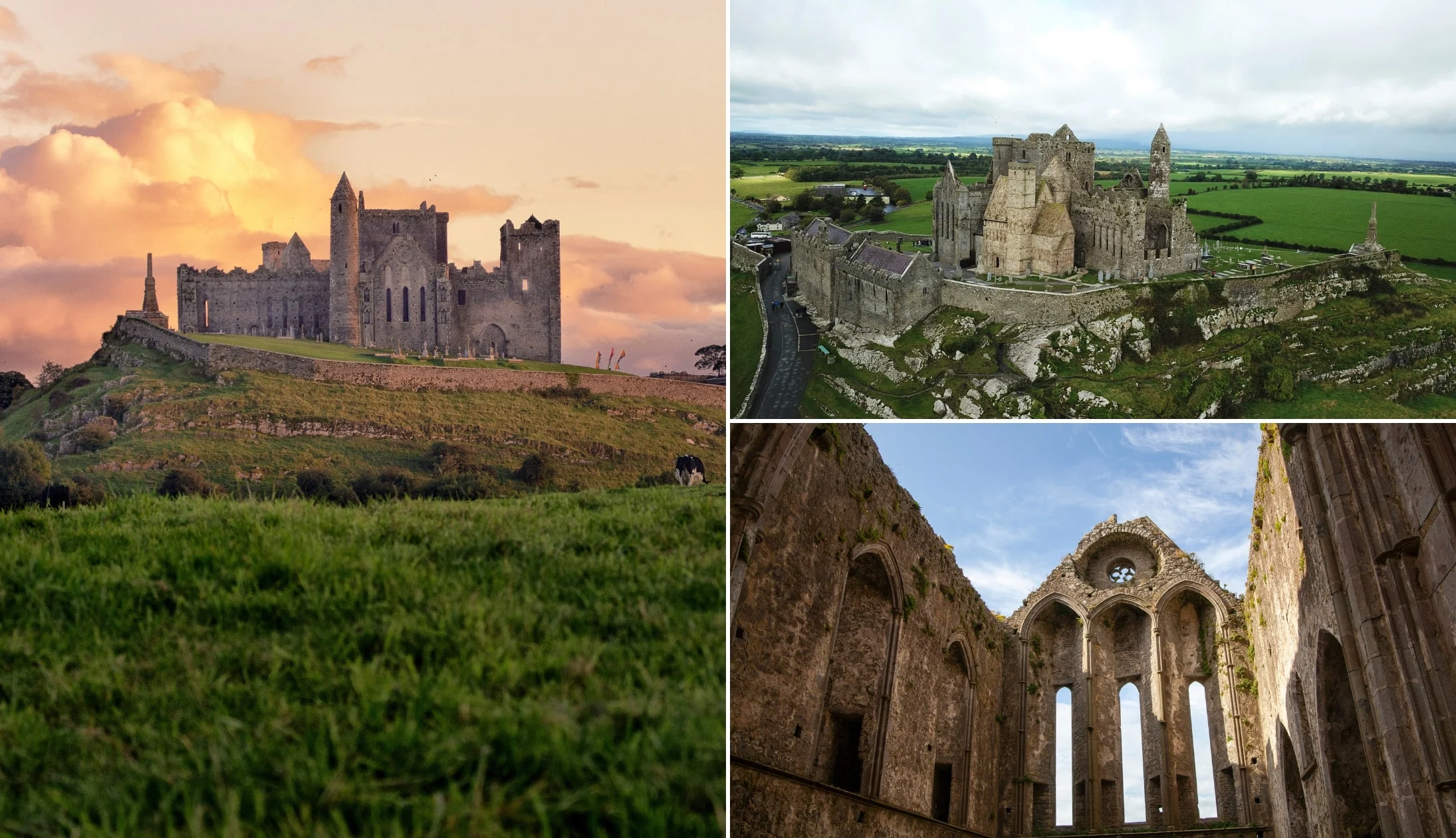
Photos via Shutterstock
Heritage Card is a handy way to save a decent chunk of money on admissions to Heritage Sites in Ireland, like Kilmainham Gaol, the Brú na Bóinne Visitor Centre, Cahir Castle and loads more.
The Heritage Card is pretty decent price-wise.
Here’s how much a ticket costs (note: families are likely to make the biggest savings with one of these):
- Adult: €40
- Senior: €30 (60 years and over)
- Student/Child: €10.00
- Family: €90.00 (2 adults & 5 eligible children)
FAQs about how to travel Ireland cheaply
If you’re still struggling, feel free to ask any questions about how to travel Ireland cheap in the comments section below.
If you’re visiting Ireland or Northern Ireland for the first time and you’re struggling to plan your trip, visit my tourist information hub – it’s packed with information you’ll find useful.
Is Ireland cheap to visit?
No, Ireland is generally not considered a cheap destination to travel to. In recent years, the cost of traveling to and within Ireland has increased, with expenses for flights, car rentals, and accommodation contributing significantly to the overall cost.
What is the cheapest way to travel to Ireland?
This will be dependant on where you are travelling from. If ferry is an option, it will be the cheapest. If not and you are required to fly, the cheapest way to travel to Ireland is to set alerts for flight price reductions can help you secure the cheapest fares.
What would a cheap trip to Ireland cost?
Based on recent calculations, a low Ireland travel budget for two people travelling from JFK in the US in June of comes in at €2,523/$2,679 (or €1,261/$1,340 per person).


